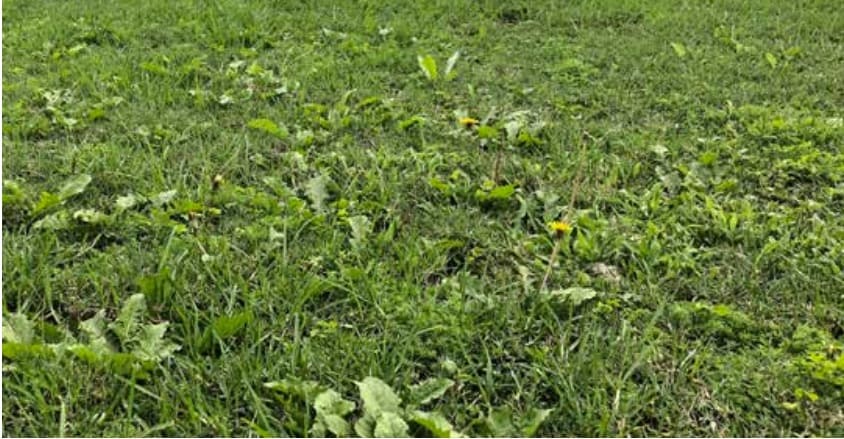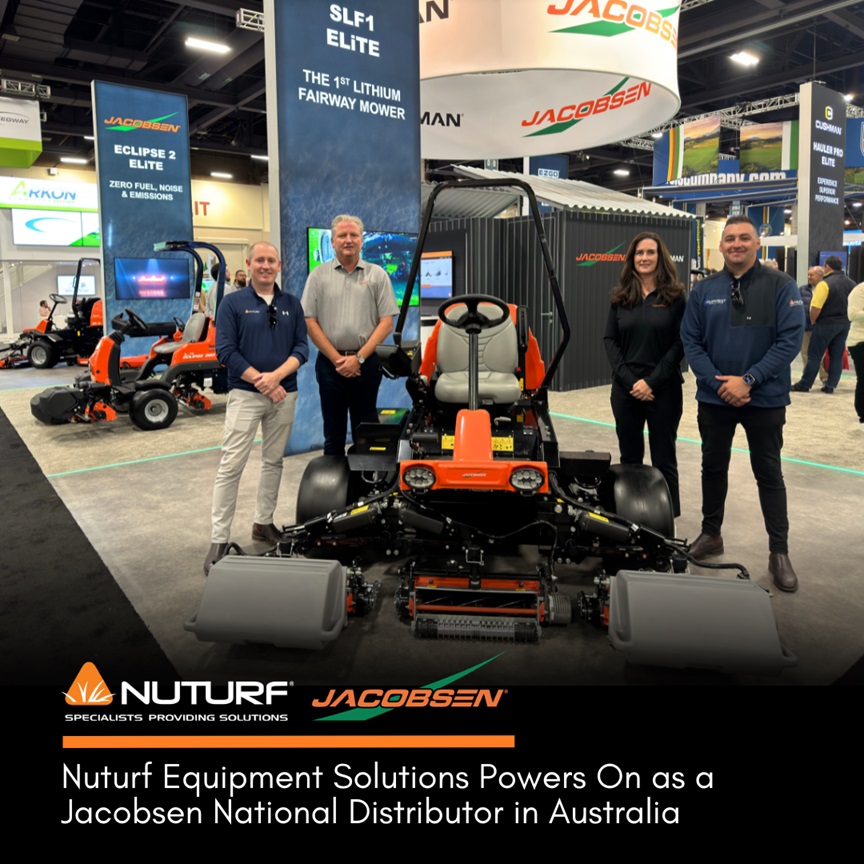Winter Broad Leaf Weed Management for Golf Courses & Sportfields
Broad Leaf Weeds (BLW) become an area of focus for turf managers mid-winter as many have a growth and development phase at this time that then results in a late winter / early spring flowering. There are many different types of broad leaf weeds – they are an impressively diverse group. Their concern in turf is the issues they cause with aesthetics and safety and the fact they constitute unwanted competition for the desired turf species. Some annual types can be prolific producers of seed that can maintain viability for many seasons to come so their legacy can be long-term without intervention.

Aesthetics are a big issue. The various habits and forms the broad leaf weeds can take make them stand out (sometimes quite literally) from the more uniform turf sward they are growing within. They can have significantly different foliage colour, shape and habit, and quite often display reproductive structures that sit high and proud almost telling everyone where they are. As turf managers we strive to maintain high levels of cleanliness and uniformity as measures of our skills so presence of these weeds can reflect poorly on ourselves. Hence we actively manage their presence in our turf.
Broad leaf weeds are true competitors
Some of the broad leaf weeds we commonly encounter have evolved growing habits that aid their competitive abilities. Bigger, flatter leaf surfaces capturing more light or disrupting light available to the surrounding turf, deep tap roots that provide anchorage, support and resilience under environmental pressure, floral structures that are presented above the canopy for access to pollinators or physical contact with pollen sources, or seed dispersal mechanisms geared towards highly successful dissemination away from the parent plant. They have many tricks they can deploy.
The traditional chemical candidates
Some of the more common candidates available such as Dicamba, MCPA, Mecoprop and Bromoxynil really have been around a long time. Highly reliable and predictable they are still used regularly because of those very attributes. We have had some newer additions such as clopyralid and diflufenican and these have also proven quite robust. The later incarnations of BLW herbicides have been two or three way mixtures looking to utilize the combinations that close any gaps any individual herbicide had in its spectrum. The only down side in the tools we have is the concentration of representatives from two particular chemistry groups – group C and Group I. These have mode of actions that involve inhibiting photosynthesis or mimicking natural growth hormones (synthetic auxins). Proportionally these two groups are well represented, or maybe over-represented, at least against an ideal scenario.
The other class of note has been the sulfonyl ureas. A clever, high performing class these were significant when they were introduced. Characterized by lower use rates and slower moving habits, they had unusual activity spectrums crossing grasses and BLW and could give complete kill to some weeds that were previously very hard to treat. The slow movement of these chemistries within their targets, which would previously have been considered a negative, was actually their real positive as this characteristic better enabled complete kill of weeds that could otherwise tolerate a hit and bounce back to growth. They had odd spectrums that would include some sedges as well as the grasses and BLW. They certainly weren’t typical when measured against prior candidates. These had absolute highs in performance, but around the world have also had some lows from resistance development. Their highly specific mode of action that attacked amino acid production (ALS inhibitors) made them vulnerable, and their impressive performance led to wide and regular adoption which probably accelerated resistance issues. A victim of their own success...
One herbicide produced in more recent years (Casper) was a clever development as it combined some old and some new - Dicamba and a Sulfonyl urea in the form of prosulfuron. Clever in the sense that once applied the Dicamba being a synthetic auxin would encourage a target to engage in uncontrolled growth. This rapid growth would place great demands on the supply of amino acids normally needed to support such rapid growth but the supply of these was being actively cut by the prosulfuron. So whilst screaming for critical nutrients the plant was being starved. A thoughtful approach.
Application technique and targeting actively growing weeds
Post emergent treatment of BLW requires attention to product placement and needs the weeds being targeted to be actively growing.
The placement more specifically concerns coverage of the complete plant foliage, looking to retain as much product as possible on the leaf surface to maximise the actual dose delivered. Normally this would involve an application volume of approximately 400L / ha, and would require the use of a nozzle in the 025 to 04 range. Assuming an operating pressure of 3 bar then a 4-5km/h forward speed would deliver within a 300 - 500L/ha range from most air induction nozzles. At these types of settings a good set of nozzles would deliver a droplet spectrum in the medium to coarse range – probably coarse (pay attention to label directions on this) which would help ensure both coverage optimisation and reduction of drift potential.
Optimising adherence to the foliage may involve the use of a sticker surfactant. These are commonly recommended by Sulfonyl urea herbicides but it is a horses for courses thing. Many herbicide formulations will contain a surfactant of some sort so adding another isnt always beneficial – label content may highlight this for the user so make sure the label is always fully read.
The health of the target weed is also very important. Herbicides rely on the functioning of the plant biochemistry to allow it to seek out its chemical objective and bind at a target site. Plants that are unwell, severely stressed or are in a stage of an annual lifecycle where normal operations are shutting down will not be able to facilitate delivery to a target site, thus compromising efficacy potential leading to poor results or inconsistent results.
How Nuturf can help you
Nuturf stock a suite of chemistries and brands to cater for all your post emergent needs and preferences. We stock single or multiple active ingredient options and can talk you through the characteristics of each to identify best fit for your site.
We stock a variety of the SU chemistries, as well as older reliable chemistries well established in the turf management realm. We stock a variety of surfactants suited to a range of herbicide types. We can help you match the specific attributes of the differing chemistries available to the prevailing species on your site to ensure the best option is selected.
















